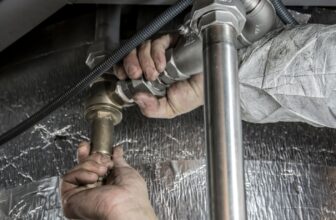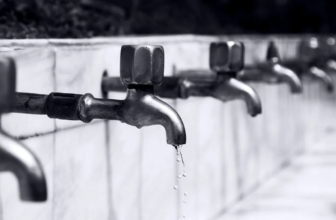
Effective Waterproofing Methods: Modern Solutions for Protecting Your Home
We live in a modern world where nothing stands still. Technologies are developing at breakneck speed and are used everywhere. The building industry is not ignored, and more innovative approaches and solutions are gradually being acquired. Especially, it is worth noting the approach to interior waterproofing, which has changed for the better in recent years. If you haven’t paid attention to this set of activities, then it’s time to take an interest. We will tell you why it is necessary, what are the advantages, and which methods are the best at the moment.
Causes of Moisture Problems in Buildings and Their Consequences
Dampness in buildings is most often caused by inadequate waterproofing, leaks in pipes, poor ventilation, and capillary rise of water from the ground. These challenges are often exacerbated by external factors such as heavy rainfall or a high water table.
As for the consequences, they can be very different, and believe me, you will definitely not like it. Most often, it is caused by the formation of mold and fungus. This not only spoils the appearance of the premises but also poses a threat to the health of the inhabitants. After all, its spores actively multiply in a humid environment, such as basements, bathrooms, or rooms with poor ventilation. Subsequently, if ignored, you’ll get allergic reactions, respiratory diseases, immunosuppression, and much more. Also, moisture causes building materials like concrete, wood, and insulation materials to deteriorate. This reduces the life of the building and increases maintenance and repair costs.
Advanced Technologies for Basement Waterproofing
- Polymeric membranes
These are flexible but durable finishes that are applied to the surface of the foundation to create a watertight barrier.

They are resistant to chemicals and aggressive environments. Also, the service life of such products often exceeds 25 years. Therefore, it is a favorable solution if you want quality and for a long time.
- Liquid waterproofing coatings
These types of coatings are sprayed on and cured to form a seamless waterproof layer. They penetrate the smallest cracks and pores, which in turn provide the highest level of airtightness. It is currently the best option for basement walls and floors with uneven surfaces or complex geometry.
- Injection systems
Injection materials are inserted into the wall or foundation structure under high pressure, filling cracks and voids. Forget about extensive construction work; localize and repair ongoing leak issues much faster. This method is one of the finest for buildings with leak problems or emergency leak repair.
- Drain service
Drainage solutions include installing pipes and wells to divert water away from the foundation and basement. This is the ultimate option for preventing water from accumulating at the foundation, which reduces the risk of flooding. Also, a properly installed drainage system can operate effectively for decades. If you need a comprehensive approach, drainage reduces the amount of water that might affect waterproofing materials.
The choice of a particular technology depends on the specifics of your home, soil type, and climatic conditions. These modern methods, in combination with each other, can provide reliable and durable basement protection from moisture.
Recommendations for Choosing a Contractor
Selecting a qualified basement waterproofing service plays a key role in successfully protecting your home from unnecessary problems.

We have prepared some essential recommendations to help you make the right choice:
Verification Of Licenses And Certifications
Ensure that the company has all the necessary licenses and certifications to perform the required work. This confirms its qualifications and compliance with safety and quality standards.
Assessment Of Experience And Reputation
Experienced professionals who have worked with various types of structures and problems can offer the best solutions. So, be sure to check reviews and ratings from previous clients to know about the quality of work and reliability of the contractor.
View A Portfolio
Ask for examples of previously completed projects. This will give you an idea about the style and quality of the work. More advanced companies have web resources where all the necessary information, including a portfolio, is already posted.
Checking The Availability Of Insurance And Warranty
The contractor should preferably have liability insurance that covers possible loss or damage. Check if there is a warranty on the work and materials. The guarantee should cover possible problems that may arise after the project is completed.
Discussion On The Timeframe For Implementation
Discuss the timeline of the project and make sure that the contractor may accomplish everything within the stipulated time frame. This will help avoid unnecessary delays and inconvenience.



















































































